Words Amicia de Moubray Photographs Simon Joy and Trevor Arnold
Tittums, Keg Meg, Hagdyke and Exploding Tittums are not endearing bygone diminutives for little children but in fact they are traditional terms for ringing different peals of church bells, as I discovered on a recent foray into the belfry at St Michael’s and All Angels, Throwley. After climbing what seemed like dozens of steps, I was greeted by Trevor Arnold of Maypole Bells in Rodmersham who, with the help of Merrick Jardine Rose son of the Vicar of Throwley, are restoring and repairing the bells, belfry and ringing chambers.
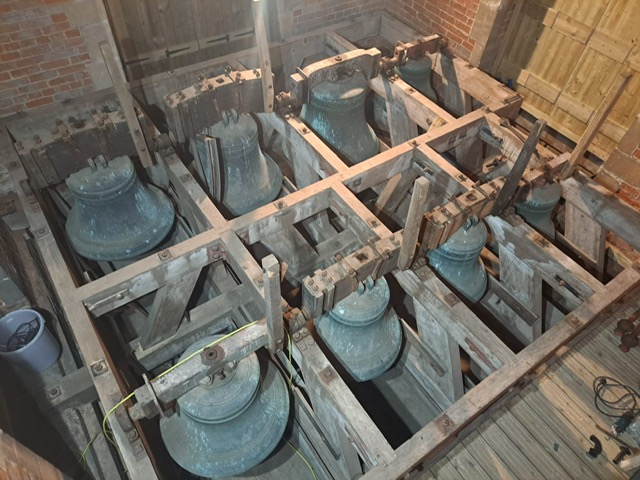
The bells of Throwley Church seen from above
Keen readers of Faversham Life will remember the article about this fine church near Faversham which has a superb collection of outstanding tombs, fine stained-glass windows and much else of interest.
‘The bells are tired now,’ says Trevor. ‘Most of their life they just hang there and if they aren’t frequently oiled the bearings wear out.’ Throwley’s bearings are in surprisingly good condition, but the caps needed to be taken off. In the old days, tallow from pig fat was used – these days the more prosaic choice is WD40.
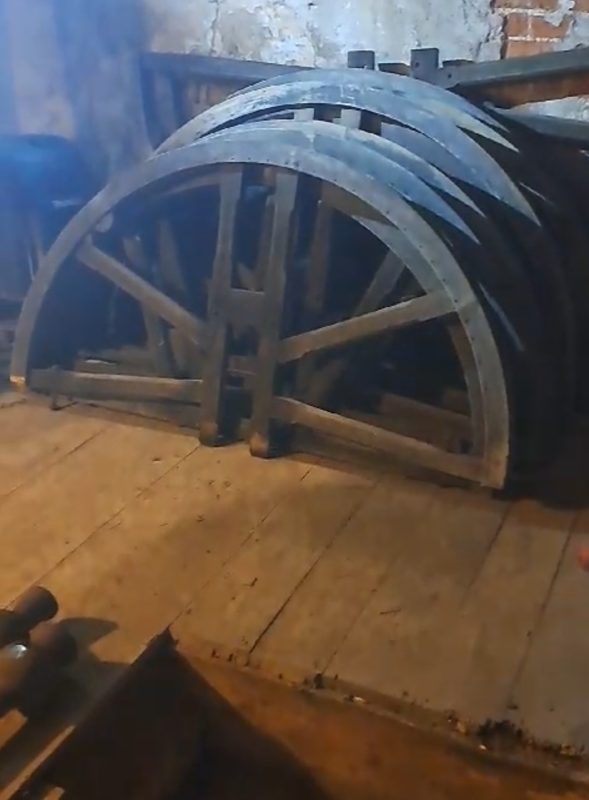
Restoration in progress of the bell wheels
Since 1933 Throwley’s bells have received scant attention. Nearly a century on, they are now in dire need of servicing and some replacement parts. The bell frames need re-oiling and the metalwork repainting. Furthermore, the structure of the church has become very rickety; access to the silence chamber (there to deaden the noise in the ringing chamber below) is now unsafe; the ladders from the silence chamber to the belfry, and from the belfry to the roof, are broken and unsafe due to woodworm and gradual decay. Access to the tower roof is now impossible because of this. Two old arched doors reused as floorboards in the 1930s were in a woeful condition and had become detached from whatever nails originally secured them. The 157 oak louvres in the highest windows were in a disastrous state – if you looked up from the churchyard you could spot that many were missing and had fallen back into the belfry. Happily, these are now restored.
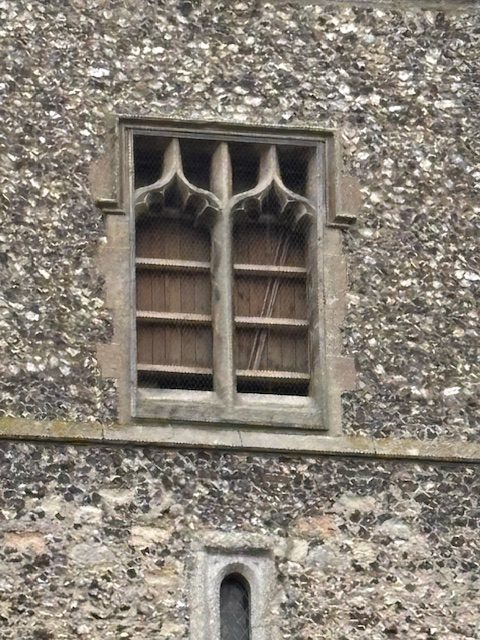
The restored louvres in the belfry
And finally, decades of dust, guano and birds’ nests have had to be cleared – enough to fill a six-foot skip. It was painstaking work as the only way to get anything in and out of the belfry is up the narrow tower staircase and finally, up two ladders.
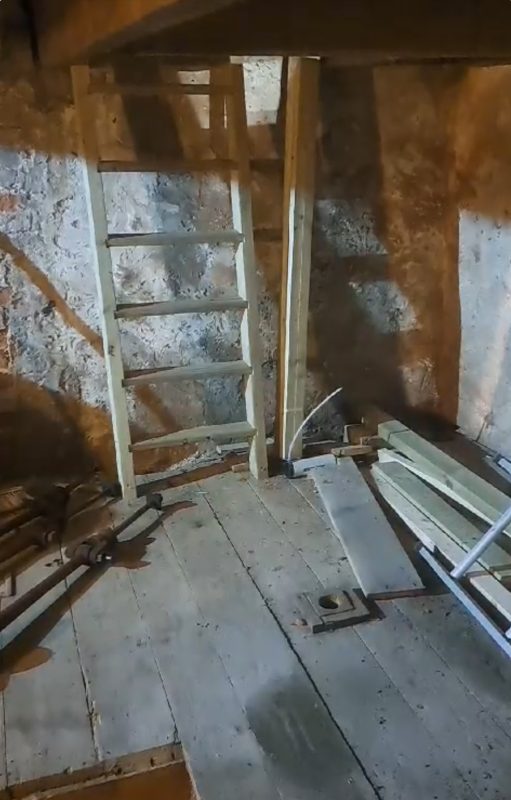
One of the two ladders that everything had to hauled up and down during the bell restoration project
It is highly commendable that the excellent 44-strong Friends of Throwley Church have banded together to raise the funds needed for this vital work. If only all rural churches had similar supporters! ‘We want to make the church the hub of the village,’ says Simon Joy, chair of the Friends. Throwley is a scattered parish without a village hall, or school.
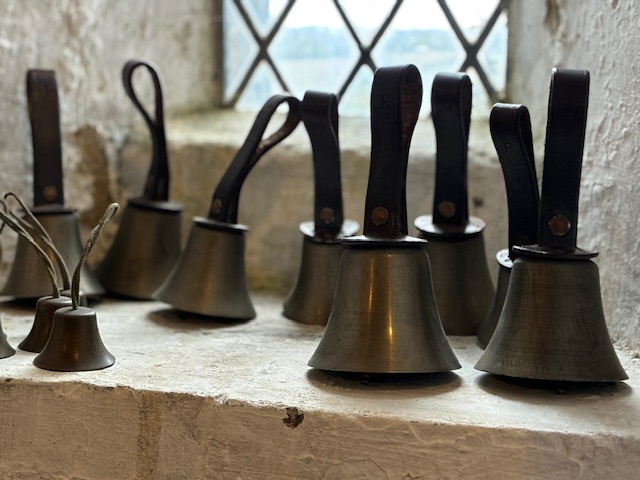
A set of hand bells were discovered during the course of the restoration project
It is not known when St Michael and All Angels acquired its first bells. The tower was completed by 1240, and the bells were probably installed soon after. The earliest record of bells at Throwley dates to 1466 when a bequest was made to repair the tower bells, and in 1523 a further bequest was made to install an additional ‘great bell’. By 1548 there were five bells. No records pertaining to the bells survive for the next 130 years.
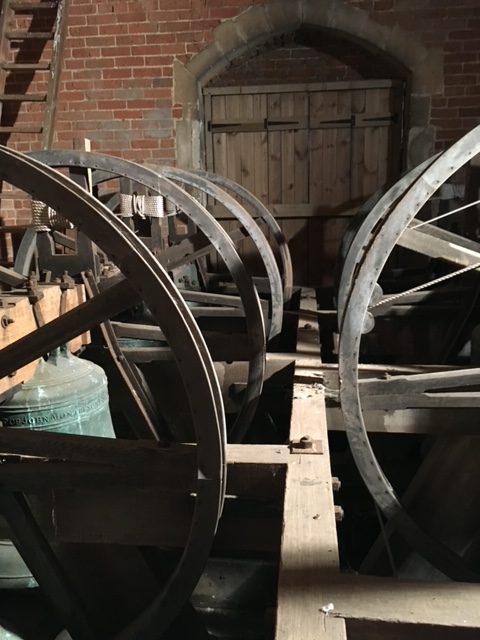
View sideways on of the bells
In 1780 Captain John Montressor, who had bought the nearby Belmont estate earlier in the year, commissioned a new set of six bells to be cast. Montressor had a fascinating life and will be the subject of a Faversham Life article in due course. He ended his days heavily in debt in Maidstone prison.
In 1758, he was commissioned as a practising engineer in the Corps of Engineers and was present at the siege of Louisburg. Perhaps his trade of engineering led to his interest in bells.
The 4th Lord Harris, the then owner of Belmont, added two more bells in memory of his wife Ada in 1933 as well as recasting two of Montressor’s bells and rehanging all the bells on a new frame. During the course of the renovation work, several copies of the Sunday Referee newspaper dating from the 1930s were uncovered. There is a plan to install a time capsule – which I am thrilled to report will include this Faversham Life article, along with other objects.
‘There is not a better sound than standing on the belfry when the bells have just finished or even when they are ringing. It is breathtaking,’ says Trevor, who began ringing in his teens in Herne Hill. ‘It is a resonance that you get on nothing else, it goes right through your body. A bell does not have one single sound; it depends on the thickness of the steel.’ He explains that skilled ringers control the sound; not very experienced ringers ‘go wobbly’.
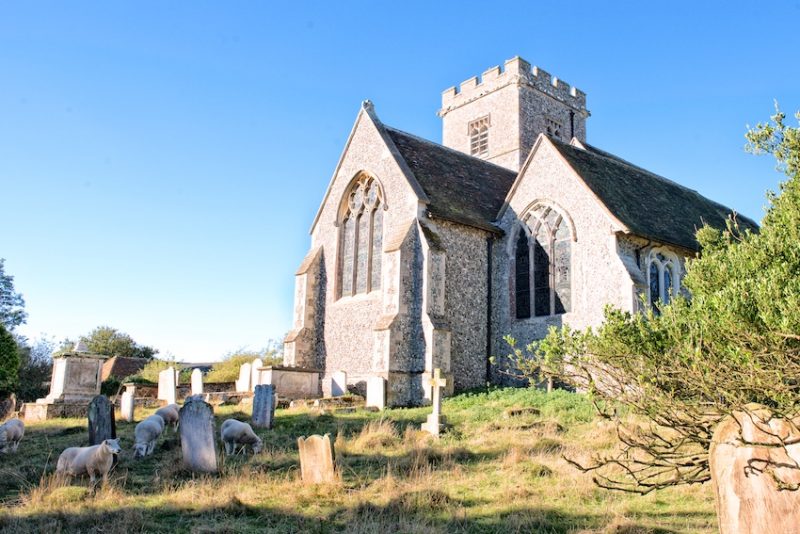
St Michael and All Angels Church at Throwley
Originally Trevor wanted to be a carpenter. ‘It is in the blood – my granddad, my uncles and brother are all carpenters.’ Aged 12, he began going round Herne Hill where he lived with his toolbox.
Appropriately for one so intimately connected with churches, Trevor believes ‘in divine intervention. I came home one day and declared I am going to start ringing’. At the time, he was working on offshore wind farms for stints as long as two months. This meant it became a lengthy process for him to learn to ring. Eventually he went on a residential bell-ringing course in Tulloch in Scotland. He is a member of the Association of Ringing Teachers.
As well as bell restoration, Maypole Bells specializes in handmade bell ropes for towers and mini rings with sallies (the fluffy woollen grip on a bell rope that is used to ring the bell) in a choice of 50 different colours made using merino wools and natural flax.
If you would like to support Throwley Church contact Simon Joy, Chair of the Friends of Throwley Church. Sjoy41@gmail.com
Text: Amicia. Photographs: Simon Joy and Trevor Arnold